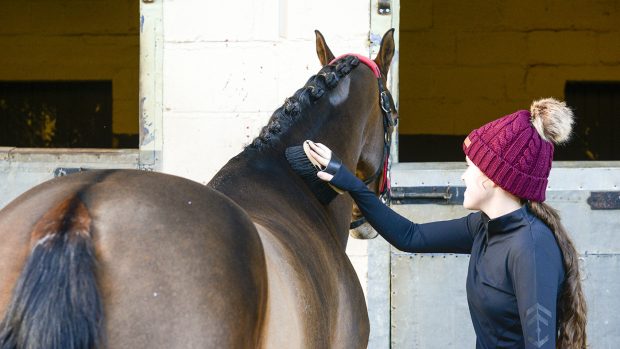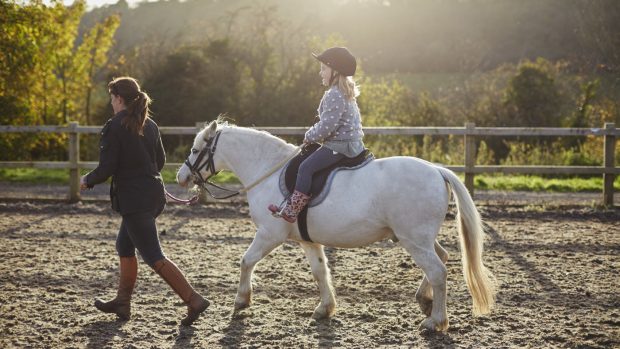Three hundred and thirty riding school proprietors completed our survey to tell us the pressures modern riding schools are facing. More than 50% said urgent action on spiralling insurance premiums is vital, along with recognition by the public that riding is a risk sport.
Similarly, the majority of respondents demanded more favourable business rates and VAT, in recognition of the educational value of riding schools.
The clear message is that the most pressing concern is the insurance burden, which grows ever dearer, irrespective of a riding centre’s claims history. For some, it has risen three- or four-fold in the last few years.
“In 15 years I’ve never had a claim, but my premiums have trebled in the last couple of years,” says Susanne Freer of BHS-approved Home Farm Riding School in Langton, Yorkshire.
She adds: “I’d like to see the introduction of a ‘no claims’ bonus similar to car insurance.”
The stark reality is that insurance hikes and the emergence of litigation-happy clients have forced many riding school owners to reassess their businesses.
John and Sue Crawford, who built Hayfield EC — a major training centre, established for 36 years in Aberdeen – are selling out to a golf consortium. They will continue to run a smaller riding centre at Hayfield for locals and golf widows.
“Maybe it’s my age [65], but I’ve had my fill of all the red tape and bureaucracy,” says John, BHSI(SM).
“I hold teaching clinics all over the world, but would rather teach in Houston, Texas, than in Britain. There, if something goes wrong, the riders have already accepted the inherent risks of riding in writing,” he says.
It is ironic that while the US has given Britain no-win no-fee lawyers, riding establishments in certain US states are protected by an “equine activity liability statute”, protecting riding centres from casual lawsuits where they have not been negligent.
The insurance issue, therefore, is not just one of cost — the fear of litigation is changing, perhaps forever, the way riding is being taught. And riding school professionals fear this most.
Katherine White of BHS- and ABRS-approved East Lodge Farm in Ecton, Northamptonshire says: “It’s a double-edged sword: the lesson must be in a safe environment, but to become proficient the client needs to appreciate there is an element of risk. More and more I’m concerned about taking people out of the manège. I used to take away children’s stirrups routinely to improve their balance and seat. While I still do that where I can, my younger staff often don’t feel they can take the risk.”
Hayfield’s John Crawford concurs: “I’ve been in the business for 44 years, but the problem has crept in at the lower end recently. If you are teaching and someone is a bit wobbly, you err on the side of caution and don’t take away their stirrups in case they wobble off. Then you would have the issue of filling out an accident form and so on. Everything conspires so the sport gets dumbed down.”
Filling out registration forms and ensuring everyone has an assessment are among a riding school’s best defences.
“No one rides here without these two things, but I am very cautious when teaching new people, especially outsiders,” says Home Farm Riding School’s Susanne Freer.
“I’ve already had a couple this week. A five-year-old, whose parents declared she was capable of walk, trot and canter, but my assessment was that she was capable of walk and trot on the lead-rein only. What might have happened if I hadn’t assessed her, as I do all new clients here?
“Unfortunately, some riding schools aren’t doing their job and their clients are only capable of riding mechanical ponies — they’re just passengers in my eyes,” adds Susanne.
While the insurance costs soar, riding schools often find themselves paying business rates comparable with those of high yield businesses such as supermarkets.
“Historically, running a riding school has been a way of life, but to run one as a business these days is difficult,” says Katherine White of East Lodge. “I wasn’t born in the saddle, but started to ride aged 11 at a riding school. From that day I dreamed of becoming a riding teacher and owning a riding school I could be proud of.
“I feel strongly that my daughter should be able to carry on the business — riding schools are such a valuable asset for so many young lives as rural educational providers.”
Susanne Freer of Home Farm is poised to admit some level of defeat. “All our costs seem to have leapt in the past two years, but we can’t suddenly hike up the price of lessons,” she says.
“Each year I’ve made improvements to the yard, but then you just get knocked back. There has to be a cut-off at some point. We’re discussing cutting the riding school back to less than 11 ponies and concentrating on breeding our Highland ponies.”
While the cost of insurance has levelled out, according to Chrissy Howick (BHSII) of Budleigh Salterton Riding School in Devon, other increases are proving hard to absorb.
“We can’t pass these price rises on to clients in an area like ours. We have had a lot of scout groups and church groups in over the summer, but if these costs were adequately reflected in the lesson price, they could not afford to ride,” she says.
“So we rely on our heavily supervised child helpers. They get so much out of it — learning responsibility and working as a team. But the day the government really enforces a ban on children helping at the yard is the day I will shut my gates for good.”



